Right… remember when we used to be picky about the incremental upgrades on next-generation smartphones? Fine, we still are, but now Xiaomi and OnePlus are giving us a better reason to complain. Let’s start with OnePlus, which is probably the Chinese company with the best reputation around the globe.After going on sale in China, the OnePlus 10 Pro is expected to see a global launch in March. While the 10 Pro seems like a nice spec bump over the OnePlus 9 Pro, one thing about the camera system stands out – it’s the least upgraded hardware part of the 2022 flagship.
OnePlus 10 Pro: Camera downgrades?
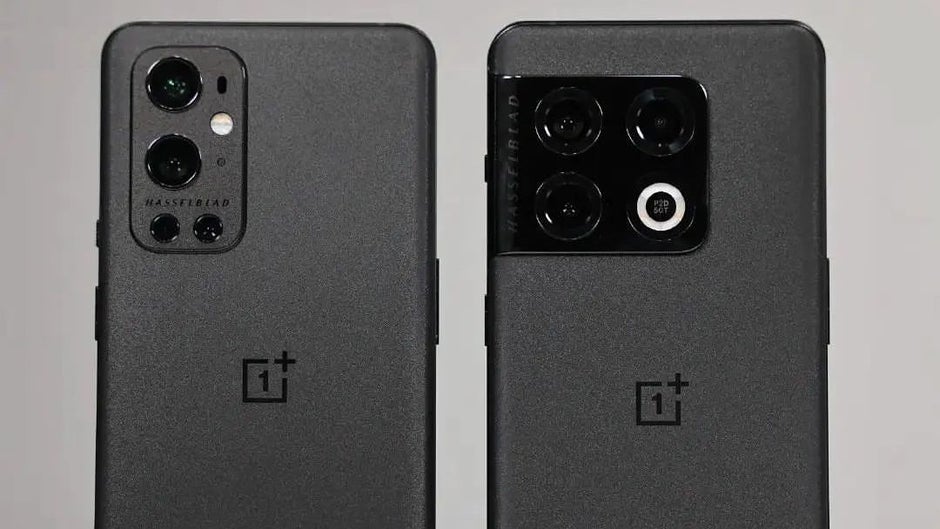
Also, OnePlus has replaced the class-leading 50MP, 1/1.56-inch ultra-wide-angle camera sensor from the OnePlus 9 Pro with another 50MP sensor, which is much smaller at 1/2.76-inches. We’ll have to wait and see how the two compare, but don’t be shocked if the new ultra-wide-angle camera doesn’t perform as well in mixed and low-light conditions.
Where is the OnePlus 10?
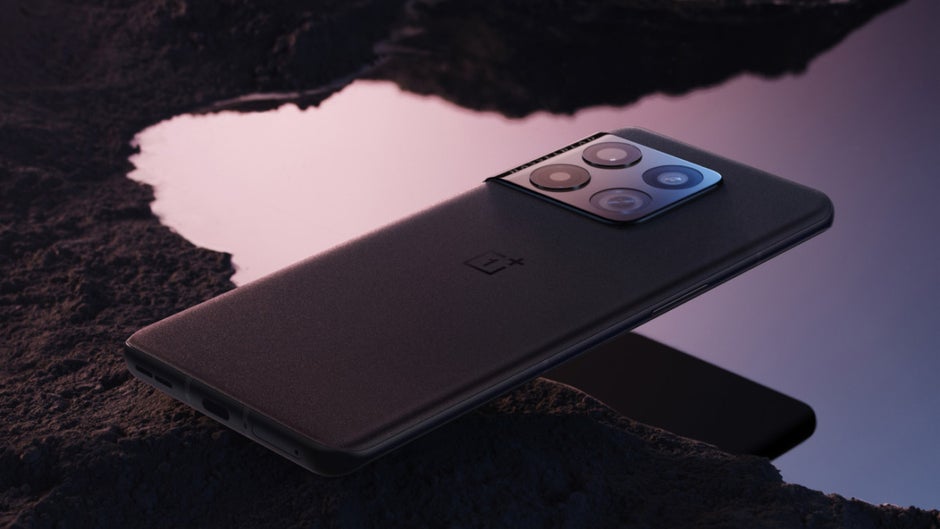
The OnePlus 10 Pro aside, of course, the elephant (that’s not) in the room is the OnePlus 10. It’s not confirmed why, but this year OnePlus has decided to skip the most affordable version of its flagship phones. That’s probably even more surprising due to the fact that we didn’t get a OnePlus 9T in 2021.
While killing the “T” series might actually be a clever move, axing the entry-level OnePlus flagship seems a bit more controversial. It’s still unknown whether OnePlus is done with non-Pro models altogether, but at least as of now, that’s what it looks like.
It’s possible that the company is looking to give more primetime to the “flagship-killer” or mid-range models on offer. For example, other than catching on fire on a few occasions (no big deal!), the OnePlus Nord 2 is an excellent phone that received much love from Victor, who reviewed it back in the summer of 2021 and ranked it as high as the OnePlus 9 Pro in terms of overall value.
Furthermore, we’ve heard rumors that OnePlus “may be returning to its “flagship killer” past with low-cost, high-performance phones”, which are said to come at lower prices but keep the flagship chipsets. MediaTek or Qualcomm? Probably both. An example for this might be the just-leaked OnePlus Nord 2T. Wait, are the T series back?!
Speaking of chips, The global chip shortage and focus on the domestic (Chinese) market around the Chinese new year (February 1) is another possibility for the OnePlus 10’s absence. As you might know, BBK Electronics, the conglomerate that owns OnePlus, Oppo, Vivo, and Realme, has decided to (sort of) merge OnePlus’ OxygenOS and Oppo’s ColorOS for a unified version of the two.
And that’s how we come to the next OnePlus 10 Pro feature that might be considered a “downgrade” by many, and that’s the new software layout which, as mentioned, is expected to take after ColorOS. While Oppo’s Android skin isn’t necessarily bad, it’s certainly different from Oxygen OS, which was beloved by many due to its toned-down look and feel, which resembled Google’s version of Android.
In fact, OnePlus phones are known for their added tasteful features, such as the theming engine, which let you pick a system-wide accent colorway before the Pixel 6 and Android 12. All in all, OxygenOS and the extra-fluid performance were the main selling points of the OnePlus flagships. While I don’t necessarily expect OnePlus phones to get slower due to the new Android skin, they’ll surely look and feel a bit different.
Xiaomi: Is the Xiaomi 12 worse than the Mi 11?
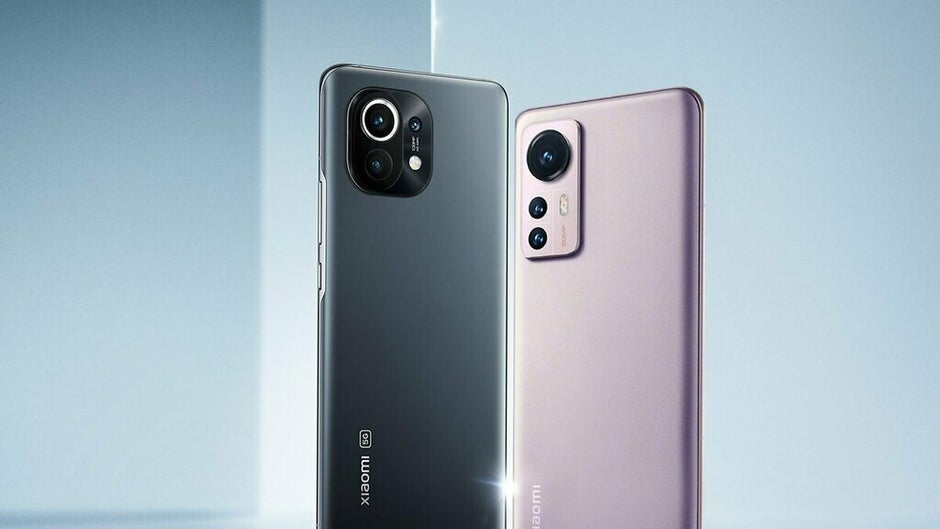
OK, now that’s where things start to get properly confusing. Thanks, Xiaomi! On December 31, the number one Chinese smartphone-maker launched three phones – the Xiaomi 12X, Xiaomi 12, and Xiaomi 12 Pro (no Mi branding anymore). Two things stand out immediately:
- The Xiaomi 12 lineup is arguably inferior to the Xiaomi Mi 11 series of phones
- There’s no Xiaomi 12 Ultra
Xiaomi 12 vs Xiaomi Mi 11: Camera hardware downgrades
Out of the gate, compared to the Xiaomi Mi 11, the Xiaomi 12 has a noticeably smaller camera sensor – 1/1.56-inches on the 2022 flagship vs 1/1.33-inches on the 2021 one. For what it’s worth, the Mi 11 boasts a 108MP camera, while the Xiaomi 12 settles for 50MP. The ultra-wide-angle camera is unchanged – in other words, a mediocre 1/3.4-inches sensor which at least is properly wide at 123-degrees.Notably, the Xiaomi 12 now features a new 5MP tele-macro camera, fixed at a 50mm focal length. It has autofocus which makes shooting macro photos easier. This one has been used in a few other Xiaomi phones like the Xiaomi 11T and 11T Pro, and it’s a real treat for macrophotography enthusiasts. It’s not just your average 2/5MP macro camera.
And finally, like the OnePlus 10 Pro, the Xiaomi 12 now comes with a new 32MP selfie shooter. And again, like the OnePlus 10 Pro, this one can only shoot 1080p videos. Yes, it’s not April Fool’s Day yet, but OnePlus and Xiaomi are already warming up.
Xiaomi 12 vs Xiaomi Mi 11: Display downgrades
When we move to the display, the older Xiaomi Mi 11 starts to pull even further ahead of the new Xiaomi 12. The 2021 phone comes with a superior 6.8-inch, 120Hz AMOLED screen with 1500 nits of peak brightness and 515 ppi density due to its high 2K+ resolution (1440×3200).
The Xiaomi 12 also has a slightly smaller battery compared to the older Mi 11 – 4500 mAh vs 4600 mAh. However, given the aforementioned disparities in display brightness and resolution, it’s safe to assume battery life on the Xiaomi 12 won’t take a big hit due to the slightly smaller cell.
Xiaomi 12 Pro vs Xiaomi Mi 11 Pro: All hardware downgrades
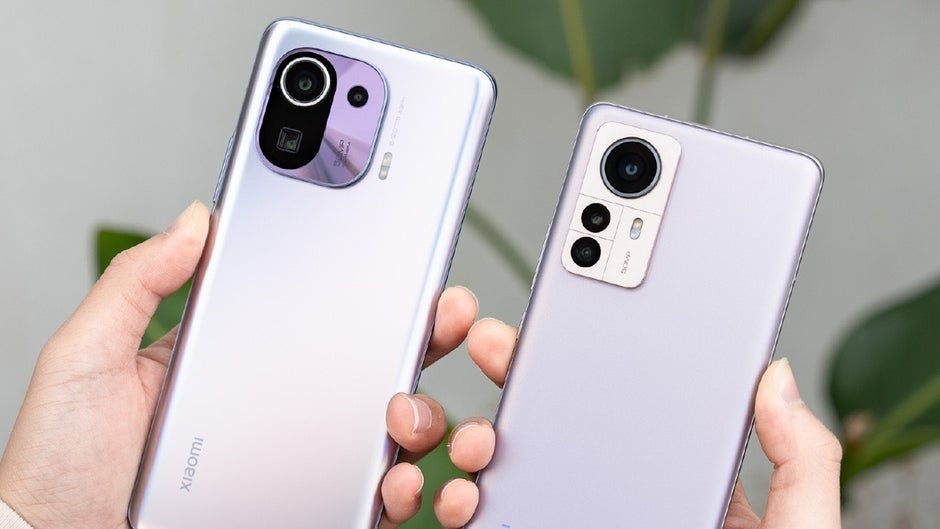
Yes, that’s right. It’s not just the Xiaomi 12 that sparks some controversies. The Xiaomi 12 Pro is also in the mix. To make it easier, let’s just take a look at a table of all the obvious hardware downgrades on the Xiaomi 12 Pro compared to the Mi 11 Pro:
| Xiaomi 12 Pro | Xiaomi Mi 11 Pro |
|---|---|
| No IP rating for dust/water resistance | IP68 dust/water resistant (up to 1.5m for 30 mins) |
| Smaller 6.7-inch screen in practically the same chassis size | Bigger 6.81-inch screen in practically the same chassis size |
| 50 MP primary camera that uses a smaller 1/1.28-inch sensor | 50 MP primary camera that uses a bigger 1/1.12-inch sensor |
| A higher-rest 50MP telephoto camera with only 2x optical zoom | A lower-res 8MP periscope zoom camera, with a much more useful 5x optical zoom |
| 4600 mAh battery | 5000 mAh battery |
| 50W fast wireless charging (100% in 42 min – as advertised) | Faster, 67W wireless charging (100% in 39 min – as advertised) |
However, other things will be virtually impossible to mask, like the lack of IP rating, for instance. I can see why Xiaomi axed this feature – getting a phone IP- certified isn’t cheap. But for someone who already owns a Mi 11 Pro or another dust/water-resistant phone, this might actually be a dealbreaker. Even if you don’t take your Xiaomi 12 Pro to the beach every day, knowing your new phone gives you less is a hard pill to swallow. Just me?
Then we have the new and significantly less capable 2x zoom camera that finds home in the Xiaomi 12 Pro. Sure, it’s a 50MP sensor, but this isn’t exactly compensating for the lack of reach. I can see how some people might prefer it, especially if you shoot lots of portrait mode photos, but 2x digital zoom already looks pretty good on most phones nowadays. Frankly, I just don’t see why Xiaomi would include such a camera, but here we are.
A higher resolution 5x periscope camera would have made the Xiaomi 12 Pro much more compelling, compared to phones like the Galaxy S22 Ultra (3x,10x optical zoom), Pixel 6 Pro (4x optical zoom), or even the OnePlus 10 Pro (3.3x optical zoom), iPhone 13 Pro (3x optical zoom), and the upcoming Galaxy S22 and S22+ (3x optical zoom). And again, it’s the fact that the Xiaomi Mi 11 Pro did have a 5x periscope zoom camera that makes the Xiaomi 12 Pro look… bad.
The 8% smaller battery and slightly slower wireless charging on the Xiaomi 12 Pro might not be a dealbreaker for most, but they are certainly there. So, don’t be exactly shocked if the Xiaomi 12 Pro lasts less than the Mi 11 Pro or even Mi 11.
Where is the Xiaomi 12 Ultra?
Unlike the OnePlus 10, we haven’t heard any rumors of the Xiaomi 12 Ultra being canceled. In fact, its absence isn’t surprising at all. The Xiaomi Mi 11 Ultra wasn’t released until late March 2021, as opposed to the Mi 11, which was announced in December 2022 (similarly to this year’s non-ultra lineup).
Rumor has it that the Xiaomi 12 Ultra will actually transition into the Mix lineup and become the Xiaomi Mix 5. The information we’ve seen so far is very mixed, so we wouldn’t bet on anything just yet. There are rumors for a Leica camera partnership, new design, and camera specs, showing the same sensors as the very capable Xiaomi Mi 11 Ultra.
Xiaomi 12 series global availability
The global versions of the Xiaomi 12, Xiaomi 12 Pro, and the Xiaomi 12X are expected in late March – just like the Xiaomi Mi 10 and Mi 11 global releases.
Remember, Xiaomi phones aren’t officially sold in the US. However, even if you were to import a Xiaomi 12 series device to the US (or the EU/UK, in case you’re impatient), the current price difference between the Xiaomi 12 and Mi 11 series makes the 12 looks like an even worse value, given all the hardware downgrades we just discussed. Prices from TradingShenzhen:
- Xiaomi 12 (8GB RAM, 128GB) – $757 vs Xiaomi Mi 11 (8GB RAM, 128GB) – $547
- Xiaomi 12 Pro (8GB RAM, 128GB) – $933 vs Xiaomi Mi 11 Pro (8GB RAM, 128GB) – $640
In fact, the current Xiaomi 12 import prices are even more ridiculous when you take into account the lackluster Xiaomi 12X, which costs $652 – almost $100 more than the much better Mi 11, which even comes with a newer processor than the “new” 12X.
And finally, the entry-level Xiaomi 12 Pro with 128GB of storage costs $11 more than the Xiaomi Mi 11 Ultra (8GB RAM /256GB), which just makes it a terrible deal – or it makes the Mi 11 Ultra an amazing deal, depending how you’d like to look at it.
Either way, don’t hurry to import the Xiaomi 12 series if you’re in the US or really anywhere else.
Are Chinese Android flagships hitting a spec/innovation ceiling?
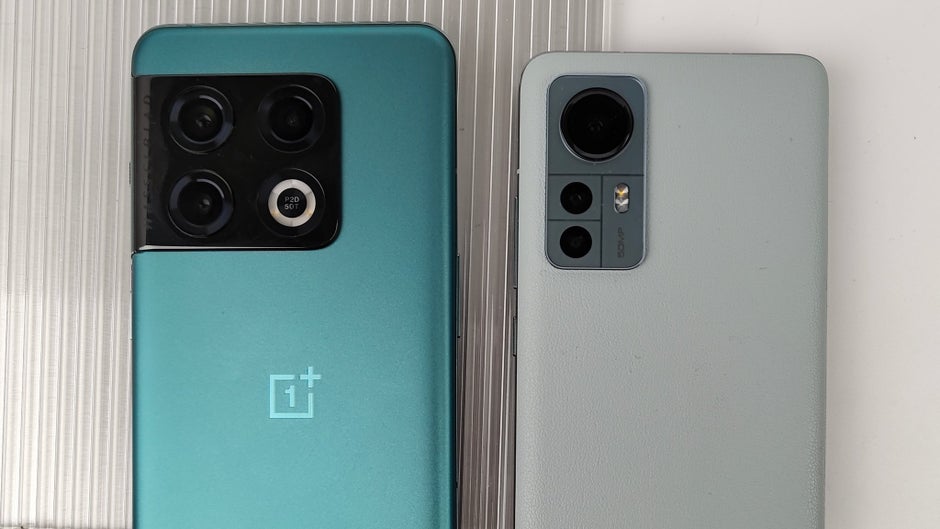
OnePlus
Sure, Huawei did manage to push the boundaries of how many innovative features a phone could bring and did so consistently for three years in a row, thanks to the P20 Pro – Mate 20 Pro – P30 Pro – Mate 30 Pro – P40 Pro+ – Mate 40 Pro+ cycle. However, even this impressive strike ended with the relatively less ambitious (although still very capable) Huawei P50 Pro (our review of the global version is on the way).
While Huawei’s impetus was largely halted due to the US-China political relationships, the same isn’t true for OnePlus (or Xiaomi). Here’s where I’m going with this – Chinese Android phone-makers are hitting a bit of a spec ceiling. Yes, that’s right. It’s only that much “innovation” you can offer until you need to start reconsidering your business model.
For example, in the case of OnePlus, the company has decided to start making “proper flagships”, and put less focus on the “flagship-killers” it used to be known for. Good. However, the company has now found itself in a bit of an identity crisis, where the ambitious new identity isn’t necessarily backed up by aggressive innovation/specs.
Xiaomi
Then we have Xiaomi, which has recently been making some utterly bizarre market moves. Sure, the Mi 11 Ultra is a masterpiece of a phone, but it was and is held back by a very limited global availability. It’s still out of stock in places like Germany and the UK to this day, and the only way of getting it is to import it from China.
Then we have a little bit of a realization! Xiaomi seems to recognize that although it can make killer flagships, this still isn’t enough to sell as many as Samsung, let alone Apple. That might be the explanation behind the noticeable spec drop, seen with the Xiaomi 12 series, compared to the Mi 11 series. For instance, why sell a phone with IP68 water/dust resistance when your customers just want a cheaper device?
And finally, we have the abundance issue. Xiaomi has been trying to carry too many different sub-brands and models in one basket, such as Redmi and POCO, and it shows. These phones often share specs with the more premium Xiaomi (formerly Mi series) flagships. So, it’s not a surprise that the company is finding it increasingly difficult to differentiate the models and balance out the price-value ratio.
So, yes! Innovation and specs on some Chinese phones are going backward, while Samsung and Apple flagships bring incremental but steady upgrades to those who are willing to wait. Apple and Samsung act like the bigger business entities that they actually are. For the most part. they seem to have things figured out. There’s a plan. At the same time, the underdogs are constantly switching things around in an attempt to find a suitable business strategy. However, it seems like the way seems to be much longer than expected…
Maybe doing what Huawei did isn’t that easy after all, huh?

